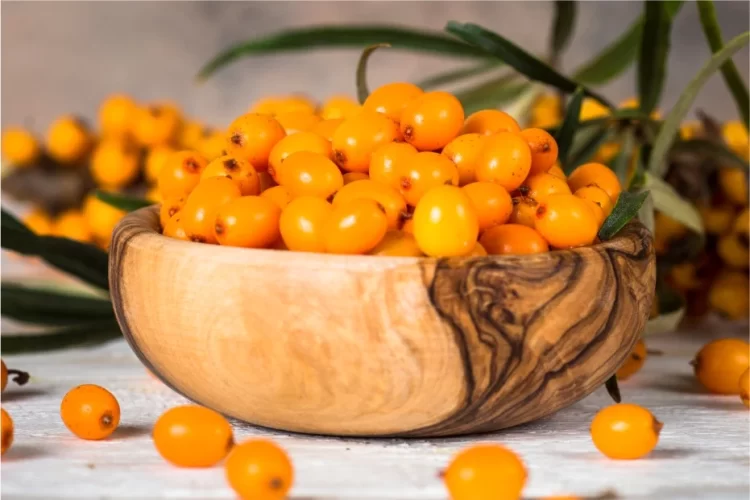Sea buckthorn (Hippophae rhamnoides) is a jewel that merits a position in your gardening palette when it comes to producing a colorful and visually attractive environment. This resistant shrub has several environmental advantages in addition to adding a splash of color. Sea buckthorn can be a great addition to your outdoor area whether you are an expert gardener or just getting started.
Let us examine planting, caring, and maintenance advice for sea buckthorn landscaping.
Planting Sea Buckthorn:
- Selecting the Right Location: Sea buckthorn thrives in full sunlight, so choose a spot in your landscape that receives at least 6 to 8 hours of direct sunlight daily.
- Soil Preparation: Well-draining soil is crucial for the health of sea buckthorn plants. Sandy or loamy soils are ideal. If your soil is heavy or compacted, consider amending it with organic matter to improve drainage.
- Spacing: Give these plants plenty of space to grow. Depending on the variety, they can spread quite a bit, so aim for around 6 to 8 feet of space between each plant.
- Planting Process: Dig a hole slightly larger than the plant’s root ball. Place the plant in the hole at the same depth as it was in its container. Backfill the hole with soil and water thoroughly to settle the soil around the roots.
Caring for Sea Buckthorn:
- Watering: While sea buckthorn is drought-tolerant once established, regular watering is essential during its first year.
- Mulching: Applying a layer of organic mulch around the base of the plant helps retain moisture, suppress weeds, and maintain an even soil temperature.
- Pruning: Prune Sea buckthorn in late winter or early spring before new growth begins. Remove any dead, damaged, or diseased branches. Proper pruning encourages healthy growth and maintains an appealing shape.
- Fertilization: Sea buckthorn doesn’t usually require heavy fertilization. A balanced, slow-release fertilizer applied in early spring can provide the necessary nutrients.
Further to maintain your plant in its best form, protect it against pests, harvest the fruit in late summer or early fall, and take care of young plants in harsh winters with burlap wraps.
In this way, sea buckthorn landscaping provides a rare combination of attractiveness, toughness, and environmental advantages. If you wish to purchase them online, Omega Fruit Sea Berry Plant is readily available online.
Appreciate the beauty of these colorful shrubs and help create a thriving and healthy outdoor environment with proper planting, caring, and maintenance techniques.

